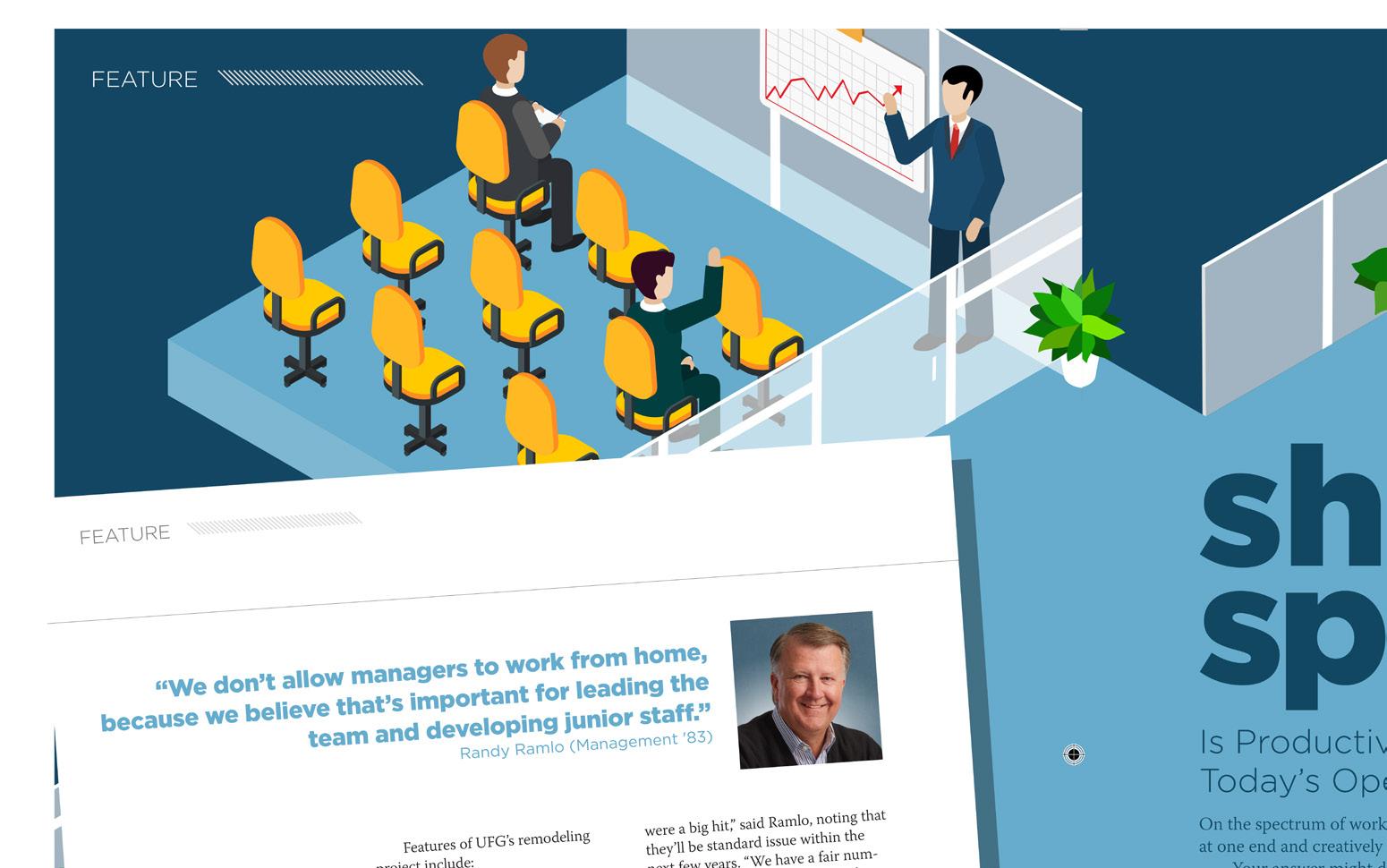
4 minute read
House Bound
THE LONG-TERM EFFECTS OF WORKING FROM HOME
The COVID-19 pandemic has disrupted life in every sense, particularly for businesses. Offices may never be the same. A variety of data shows that even after the pandemic ends, many companies expect their employees will work from home at least a few days a week.
Advertisement
These dramatic shifts could have lasting implications for corporate America. Will competition for office space in urban hubs be less fierce? Will companies still pursue open-office designs intended to encourage collaboration? Or will these changes recede with the pandemic?
This isn’t the first time we’ve seen dramatic shifts in the workplace. During the Great Depression in the late 1920s and 1930s, businesses were forced to adhere to new regulations and several new governmental agencies were formed. In the 1950s, jets changed how people traveled. Suddenly, businesses could have face-to-face meetings across countries and continents. Similarly, in the 1980s, cell phones connected people on the go. And in 1991, the world wide web altered every facet of business.
The disruption from COVID-19 is perhaps the most sudden, though, particularly for day-to-day life. The pandemic has moved people to remote work, acting as a sort of proving ground for the rising work-from-home movement. And despite the drastic transition, it’s been largely a successful change.
“People have definitely proven that they can work from home successfully,” said Rusty Guay, UNI associate professor of management. “So for people that really want to continue doing that in the future and have a job where they can, it’s much more realistic that the option exists. COVID-19 really forced a lot of workplaces to become more accommodating and flexible when it comes to stuff like remote working, and I could see that continuing.”
Jamal White (Marketing and Management ’18), a human resources manager at Procter and Gamble, has seen the benefits of it firsthand. The flexibility of working from wherever, whether that’s at home or in the office, can help employees thrive and increase productivity.

Jamal White (Marketing and Management '18)
“With people able to virtually work from home, they’re no longer restricted to and limited to where the office location is,” White said. “There used to be the idea that you needed to be in the office, to be present with your team, to work together. We found that’s not true. I think we’re going to see a shift in the management of employee relations and the creation of a more flexible work environment.”
In a June survey, nearly twothirds of American workers who said their jobs allowed them to work remotely told researchers they enjoyed working from home. Surveys of businesses around the same time period found employers predicted anywhere from 27-40% of their workers would continue working remotely, even if just a few days a week, after the pandemic.
There are some challenges to working from home, though. There’s a need for human interaction, which can be difficult to achieve virtually. According to a YouGov survey from April, the top challenges to working from home included distractions by other family members in the house, creating interpersonal relationships with coworkers and finding a proper workplace.
There’s also the crucial issue of burnout. Remote work blurs the line between work and life, which can lead to long hours and a reluctance to take days off for rest and recovery.

In 2016, UNI Biz featured alums who were transitioning to the co-working office trend.
UNIBiz 2016
“The inability to disconnect from work can be a huge issue that will likely lead to some burnout from some people,” Guay said. “I was bad at that before, but now I often start working from my kitchen office even earlier in the morning and longer into the night before.”
For employers, the challenges are flipped — being sure employees aren’t overworked, avoiding over communicating and project management. But for the most part, the transition has been successful for employers. According to Arizent,
Working from home challenges and solutions for managers
Working from home has its challenges for managers. Luckily, there are research-based solutions employers can take to manage remote workers. Here are a few of the top challenges of a remote workforce and potential solutions, according to “A Guide to Managing Your (Newly) Remote Workers” published by the Harvard Business Review.
LACK OF FACE-TO-FACE SUPERVISION
Managers can establish daily checks-in via virtual video chat to take stock of workload and progress. You should also create multiple communication channels, like direct messaging, email and video chats, to make yourself as available as possible.
LACK OF ACCESS TO INFORMATION
Create a hub of information for the entire team to access, like a Google Drive folder or a space on a shared company server. Regular checkups are also important to answer any quick questions employees have.
SOCIAL ISOLATION
Create opportunities for virtual social interactions as much as possible. Some companies have hosted afternoon “Happy Hours” once a month to allow employees to connect and have some fun.
DISTRACTIONS AT HOME
Obviously, this is difficult for managers to control. The key here is to offer encouragement and emotional support if necessary. Be understanding that an employee might have to work odd hours when distractions are limited. And don’t forget to check in from time to time. A quick, “How are you doing?” goes a long way.









